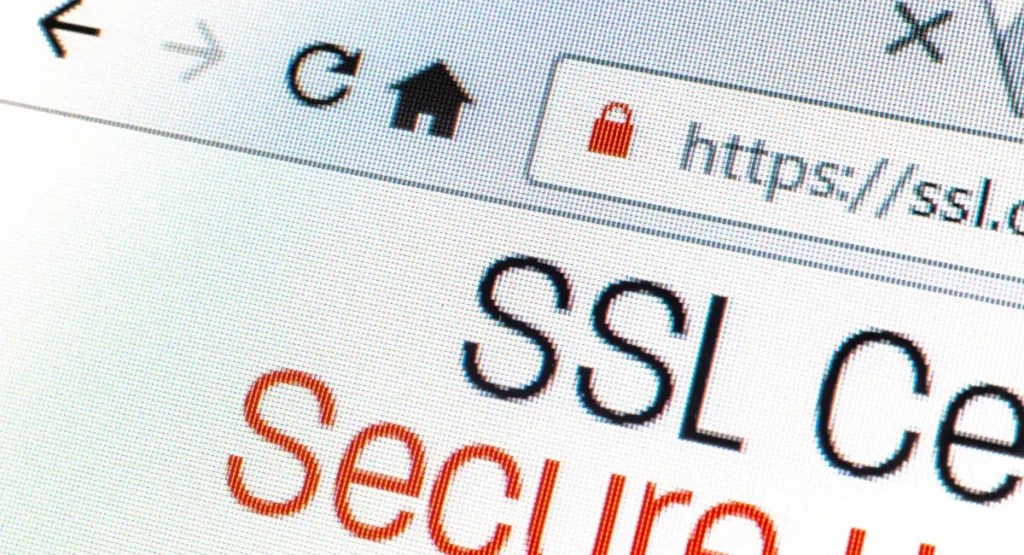If you plan to create a website, you may wonder if you need an SSL (Secure Sockets Layer) certificate. An SSL certificate is a small data file installed on a web server that helps secure the connection between a website and a user’s web browser.
So, do you need an SSL certificate for your website? The short answer is that it depends on your website’s needs. This article’ll explore why you might need an SSL certificate and how to choose and install one.
Why Do I Need an SSL Certificate for My Website?
There are several reasons why you might need an SSL certificate for your website:
Security
One of the main reasons to use an SSL certificate is to secure the connection between your website and a user’s web browser. This helps to protect sensitive information, such as login credentials and credit card numbers, from being intercepted by third parties. This is especially important if your website handles sensitive data or transactions.
SEO
Having an SSL certificate can also improve your website’s SEO. Search engines like Google use the security of a website as a ranking factor, so an SSL certificate can help to boost your search engine rankings.
Trust
An SSL certificate can also help to build trust with your users. When a user visits a website with an SSL certificate, they will see a padlock icon in the address bar, which indicates that the connection is secure. This can help to build trust and confidence in your website and your business.
How to Choose an SSL Certificate for Your Website
When choosing an SSL certificate for your website, there are a few things to consider:
Validation Level
There are three main types of SSL certificates based on the level of validation they provide: domain validation, organization validation, and extended validation.
- Domain validation (DV) SSL certificates are the most basic and least expensive option. They only verify that you own the domain and do not provide any information about your organization.
- Organization Validation (OV) SSL certificates provide more information about your organization, including your name and location. They require more verification than DV SSL certificates.
- Extended Validation (EV) SSL certificates provide the highest level of assurance and the most information about your organization. They require the most extensive verification process and are typically the most expensive option.
Compatibility
It is essential to choose an SSL certificate that is compatible with your website and the web server. Different SSL certificates support different types of web servers and protocols, so be sure to choose one compatible with your website.
Warranty
Some SSL certificates come with a warranty and financial protection if the certificate is issued to an unauthorized party. If your website handles sensitive information or high-value transactions, an SSL certificate with a higher warranty may be worth considering.
Customer Support
Finally, consider the level of customer support the SSL certificate provider offers. Choose a provider that provides reliable and responsive support if y any questions or issues with your SSL certificate.
How to Install an SSL Certificate on Your Website
Once you have chosen an SSL certificate for your website, you must install it. Here are the steps to follow:
Purchase an SSL certificate
The first step is to purchase an SSL certificate from a trusted provider. You can buy an SSL certificate directly from a provider or through a website hosting service that offers SSL certificates as an add-on.
Generate a Certificate Signing Request (CSR)
Next, you must generate a CSR (Certificate Signing Request). A CSR is a block of encoded text rendered on the server where the SSL certificate will be installed. It contains information about your organization and domain and is used to request an SSL certificate.
Install the SSL certificate.
Once you have received your SSL certificate, you must install it on your web server. The specific steps for installation will vary depending on your web server and hosting platform, but generally, you will need to:
- Copy the SSL certificate and private critical files to your web server.
- Configure your web server to use the SSL certificate and private key.
- Configure your website to use HTTPS instead of HTTP.
- Test your SSL certificate to ensure it is installed correctly.
Configure your website to use HTTPS.
After you have installed your SSL certificate, you will need to configure your website to use HTTPS instead of HTTP. This typically involves updating your website’s links and resources to use HTTPS and updating any redirects or references to the old HTTP version of your website.
Final Thoughts
In conclusion, an SSL certificate is a valuable tool for securing the connection between your website and a user’s web browser. It can provide benefits such as improved security, SEO, and trust. Choosing an SSL certificate involves considering factors such as validation level, compatibility, warranty, and customer support. Installing an SSL certificate involves purchasing an SSL certificate, generating a CSR, and installing the SSL certificate on your web server. Following these steps, you can secure your website with an SSL certificate and provide users with a safer and more trusted online experience.
If you need help choosing or installing an SSL certificate for your website, our web design services team is here to assist you. Contact us today to learn more.



